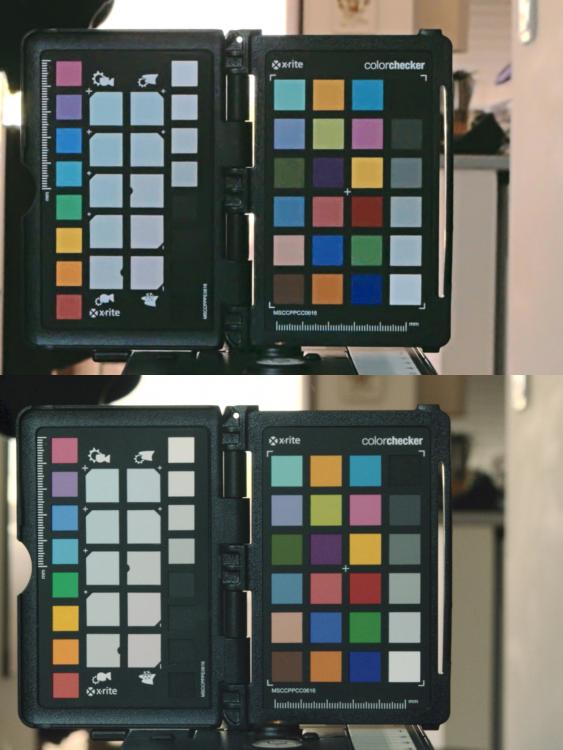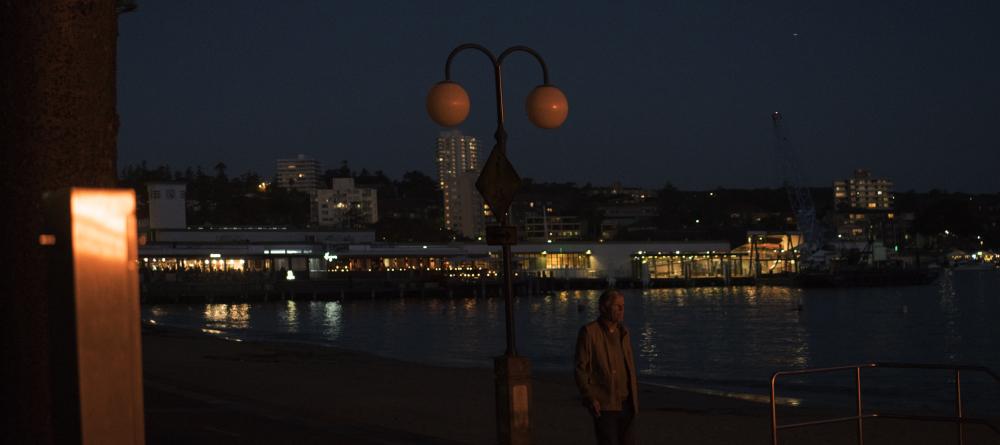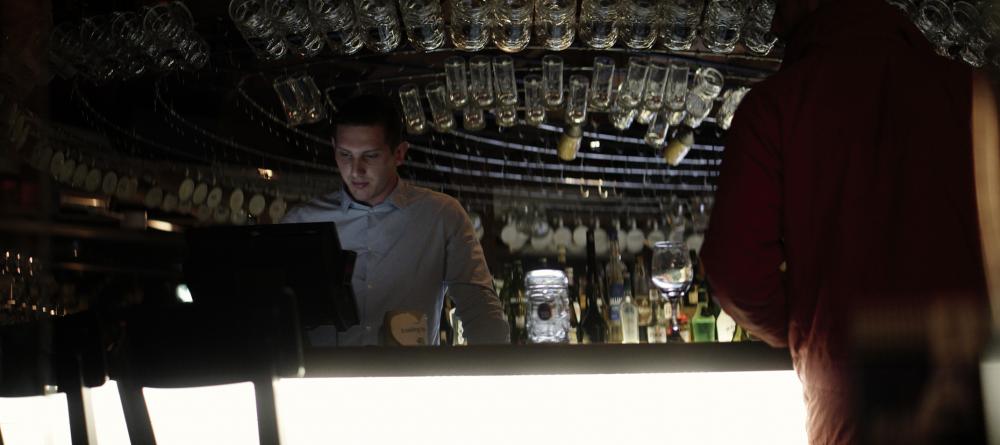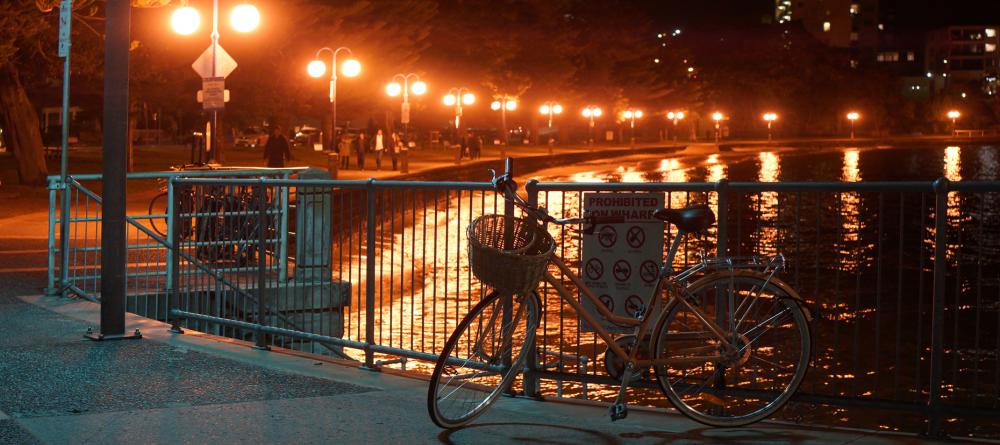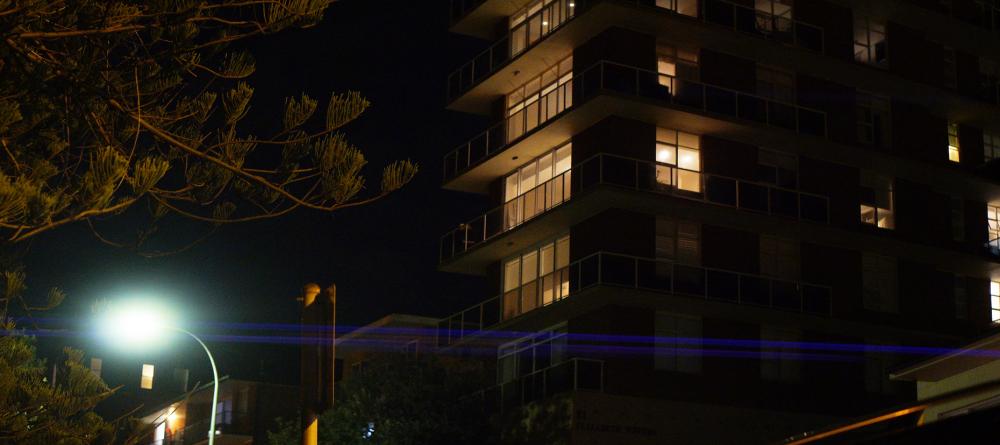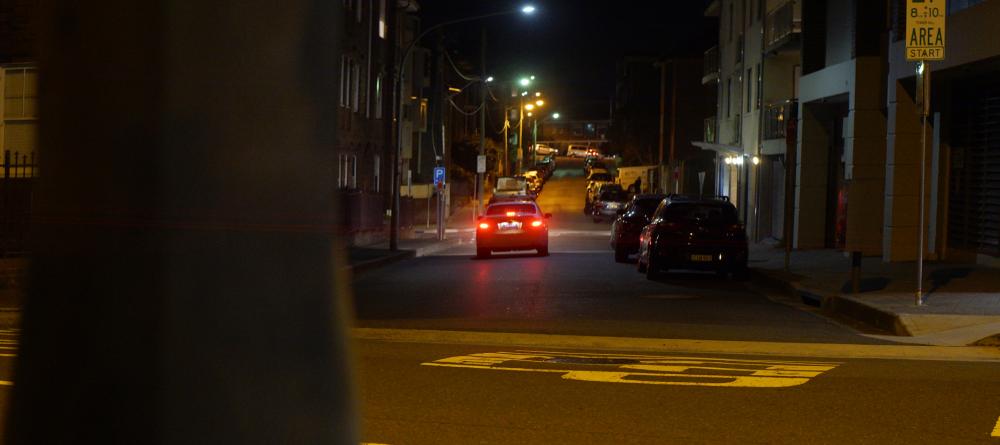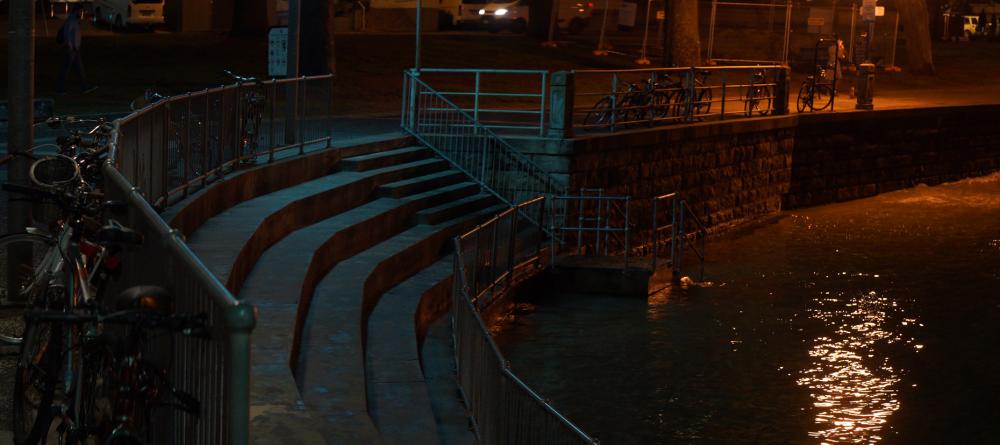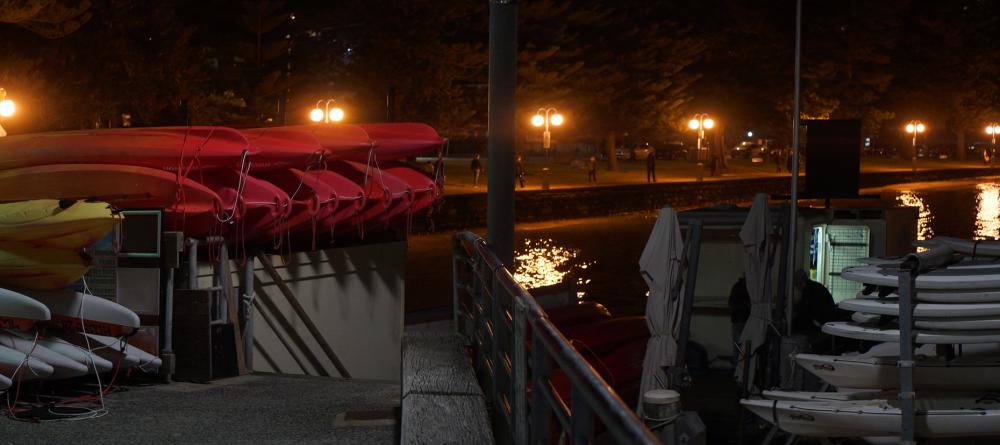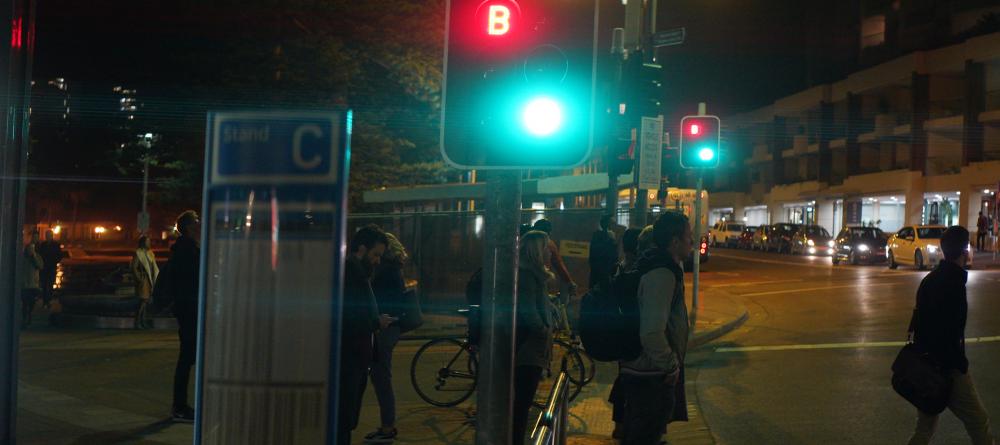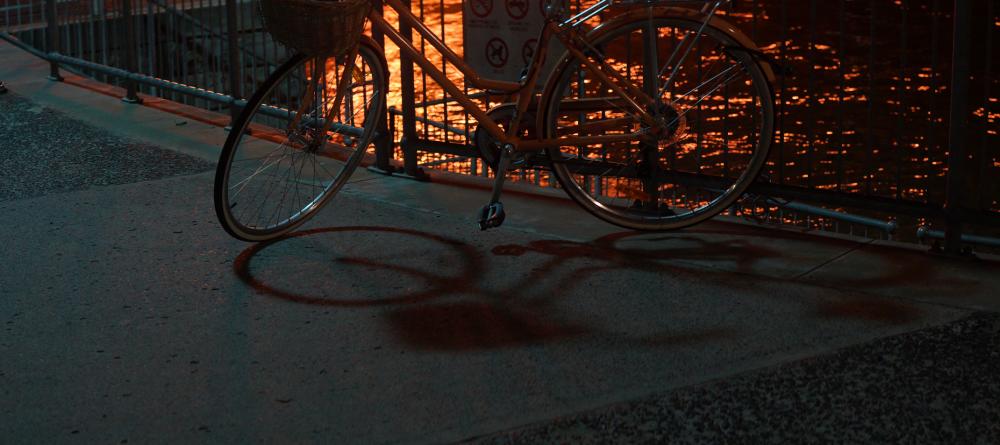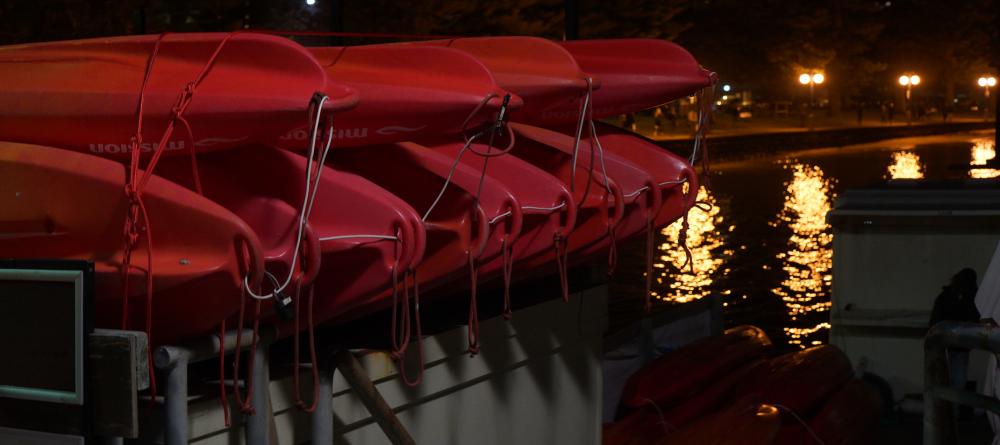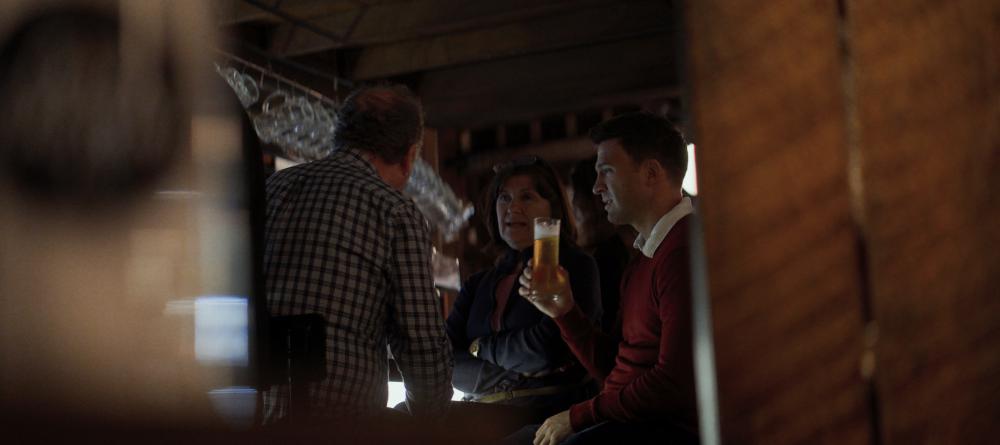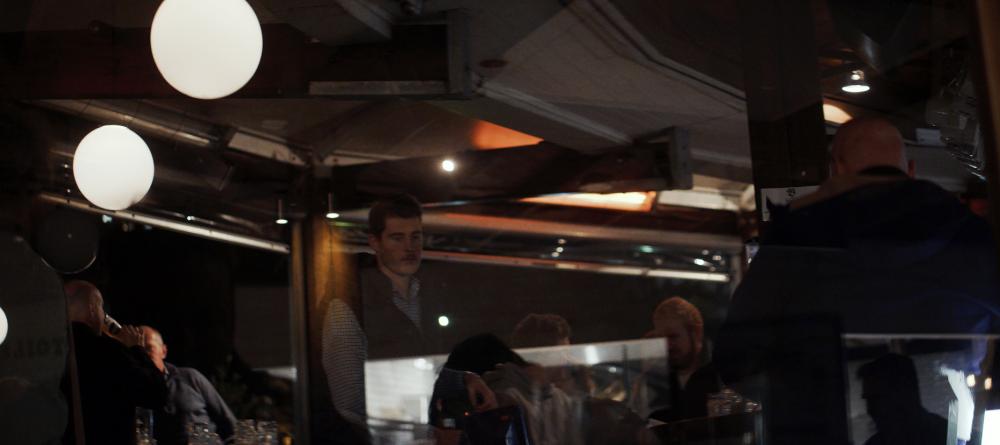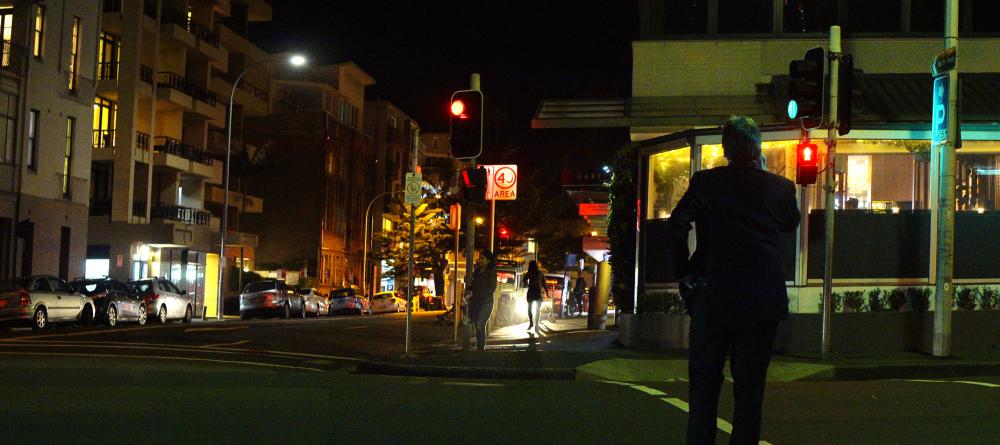Leaderboard
Popular Content
Showing content with the highest reputation on 06/23/2017 in all areas
-
How do you define creativity though? Yes, if you film street photography style footage, a GH5 will offer more creative freedom than a fully rigged Arri. If you are filming from a camera mount on a snowboard, then the GoPro will offer more creative freedom than a GH5 If you are filming fast moving skaters, then a DJI Osmo will offer more creative freedom than a GoPro If you are filming the aurora, then a Sony a7s ii will offer more creative freedom than an DJI Osmo If you are filming music video, a C200 will offer more creative freedom than an A7s ii and on and on..... There is no one camera that offers more creativity for every type of filming.7 points
-
People can't be creative while they're working? Or efficient when they're not? Wedding and event shooters aspire to pro cams because they're sick of fiddling with NDs and tiny batteries and rolling shutter and too-big or too-small codecs. The time lost dicking around with these things doesn't make anyone more creative, it only endangers their paycheck/career, AND loses them creative opportunities. There are plenty of subjects and shooting styles that lend themselves perfectly to photo cams and their slower, fiddlier workflow... and there are plenty that don't, even past weddings and events. And this is a separate issue from creativity and freedom vs. efficiency and appearances. Someone can be completely creative whilst shooting fast-paced or high-pressure situations- at least they can if they have the time to. I do definitely agree that the IQ gap is so much smaller nowadays that this is a much blurrier argument than it was a few years ago. A7sII, GH5, etc vs. FS5/7, C200, etc is certainly a smaller gap than 7D vs. C300, or whatever other matchup from 4-10 years ago. Smaller price gap too. The lack of IBIS in pro bodies is also definitely adding to the blur.6 points
-

Pro camcorders? They're pointless creatively.
zetty and 3 others reacted to Andrew Reid for a topic
Work tools are boring. I've always found mirrorless cameras way more fun to actually shoot with. In his day job John Brawley has an Alexa. Why on earth would he shoot 'for fun' creatively, with an Olympus E-M1 II? But he does. There are a lot of talented DPs who shoot with DSLRs and mirrorless cameras once they down their RED and Arri cameras at the end of the day. Yet I find in the mid-range market for video pros (wedding videographers for example) there's an aspirational value attached to the higher-end pro cameras, that is stupid and pointless. Aspirations should be creative. Owning a Sony FS5 or Canon C500 doesn't make you more creative, it makes you more efficient at work by a slight bit, and you appear more professional because of the big nobs and bells & whistles. Sadly, it doesn't necessarily make for "better" work because I have yet to see a clear distinction between work shot on mirrorless cameras and on stuff like the C300. In fact often the small camera stuff looks better and more inspired. The legendary Anthony Dod Mantle is known for his rough and ready work with digital, but when he went Canon C-series on Oliver Stone's recent series of Putin interviews, the look they achieved was slap dash and lazy to my eye... Could have been so much better. He used DSLRs as well on this shoot (between 2015-2017) and those shots actually came out more interesting! Too many pro videographers seem to dream of cameras like an Alexa and RED, why shows to me how important the professional label and look is to people, but creatively, they are no better and actually worse than the small cameras. I hated shooting with my Sony FS5. A fiddly pain in the ass, for my music video work in Berlin, it needed an OIS lens and rig for handheld - limiting the choice of looks from the lens. With a GH5 you can put any lens on there and it is instantly stable for handheld work, with a tiny form factor that gets out of the way. The FS5's image was worse than an A7S II but double the price. Aside from high frame rates it didn't offer anything creatively over a DSLR or mirrorless camera and now I have 120fps full frame on two of my small cameras along with 240fps 1080p on the pocket RX100 IV - So why bother getting a more expensive camera if it doesn't power you along creatively as much as the cheaper stuff!? These pro cameras aren't cheap... Sometimes I got lucky and I bought a Canon C500 for a very good price used, but do you know how many times I have felt compelled to take it out and use it for artistic work? Zero times. Kendy Ty is another example of a pro who downs his workhorse RED and shoots with a DSLR... The camera gets out of the way to such an extent he can shoot short films in public and direct the actors at the same time as being the main cinematographer. His work sticks in the mind as some of the most creative and spontaneous I've seen and there's not a C200 in sight... zero need for one! I think pros have by-and-large completely forgotten and lost the spirit of the DSLR movement back from 2010-2012 as they sought efficiency. XLRs, built in NDs, yadda yadda. Blackmagic as well, when they ditched the small cameras and went all-out URSA on us. Canon too... Oh wait, they never got it in the first place, and they invented it! Cameras should not just be about making money. That's how an art-form gets boring. That's how it dies. They are not just about doing a job. They're about creatively enabling artists and they're about democratising the art form so that price doesn't act as a road block to new talent. Of course Canon only care about profit, they are not interested in that. The Olympus E-M1 II's stabilisation isn't seen on any of the pro cinema cameras. It's unique. It offers something creatively to the result that a bigger, more complex shooting rig simply does not. On the audio side, so important creatively, small mirrorless cameras used to have limitations and some still do - but with XLR boxes with phantom power that fit in a hot-shoe, you can't really complain. Audio is not a big limiting factor on the Panasonic GH5. I still know that pros have their professional reasons for going Cinema EOS or Sony FS or RED or even Arri... Workflows, codecs, ergonomics, power, performance, looking-the-part... I'm not denying their reasons for one second, it would be so naive to suggest they drop the workhorse cameras and use a mirrorless camera for paid work. But the creative side of the small cameras is what matters to me and I think it is being overlooked as specs in the $6000-$10,000 pro market hot up. Sure, you can shoot all day on a big battery to a small broadcast ready codec with the C200, very practical... But can you put a 1970's Super 16 lens on there? Can you increase the character of your images by a factor of 10? Does it have an anamorphic mode? Nope. If I ever buy a C200... Shoot me. It's over.4 points -

Is 8K too much?
deezid and 3 others reacted to Andrew Reid for a topic
I think only VR stands to benefit from 8K. Cinema doesn't need it. However, in 10 years we might all be strapped into our VR headsets for watching movies... Even at the cinema! I'm very impressed with how immersive VR is when done right. It is here to stay, unlike 3D. But watching 8K on a flat screen from a distance is pointless... Human eye just isn't up to it.4 points -
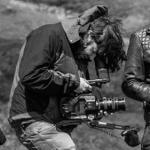
Pro camcorders? They're pointless creatively.
Amro Othman and 3 others reacted to Oliver Daniel for a topic
Nice vids from the archive! I'm the same, I don't like rigging up my cameras. I want them as bare bones a possible. Some of the FS5/7Q rigs I've seen are like houses, not my kettle of fish. Yes, I have an Inferno but I can't find an ergonomic way of mounting it on the camera. So I just run it off the SDI and let the other guy hold it for monitoring. Recently, I shot a music video on the A6500 with this criteria, to see what would happen: Completely handheld. Only A6500, 18-105mm gear used. No lights, No grip. Nothing. Autofocus only. Mostly 4k, and some 100fps. At the time, I had an FS5 in the bag too with a bunch of Sigma lenses. Didn't use them. A6500's dim screen and rolling shutter was annoying, but I got round it.4 points -
I remember a story many years ago when home studio recording first started to take a hold and Tom Robinson (ask your Dad, kids) was talking about why he'd got a new fangled (at the time) Tascam Portastudio to record his demos on. His reply has always stuck with me because he said that when a band reaches a certain level of success the first thing they do is get flight cases for their gear and cables that you could tie the QE2 to the quayside with. This all then has to go into storage. So when he felt like writing a song, he'd have to call a roadie, call a van hire place, get the roadie to go to the storage place to pick up the gear, book a rehearsal room (because the flight cases made it impractical to have in the house), drive to the rehearsal room, wait for the gear to be unpacked and plugged in and then he could start to jam and record ideas. At which point he'd forgotten what it was he wanted to do and had lost the energy to do it anyway. With the portastudio, he could just switch it on and get on with it. I see a lot of parallels here too. The only thing thats inspired me to pull the RED Epic out of its case since I got it back was to do the side by side to tune the GX80 profile. It felt like having to go to the corner shop in a Sherman tank. In my real day job I have to take the same 'get the big clunky stuff out' approach because there is an expectation to deliver a set standard both in terms of image quality but pretty much in terms of content too. Coverage is what its all about to be honest. And the demands of that type of efficiency directs you to a certain type of kit. All of which means I'm about as creative as the guy sitting next to me who has also got exactly the same sort of kit (with a 50/50 shot on the brand). Which means to say, not very creative. Or certainly not a massive differential in creativity. We're looking at the same scene and covering it with the same kit so inevitable we're going to be much of a muchness creatively. But the creativity can sometimes be forced upon you (by equipment failure usually!) so you have to do something with what you've got and that triggers the resourcefulness response that is so often at the root of creativity. Being in a situation of "I can't make what I want" often makes you find better ways to make what you actually need. After wrestling with the Epic and then putting the same lens on the GX80 and shooting the same thing, I was left (with a bit of twiddling) with these two test charts. So, could I shoot this same scene with a camera that cost less than the media of the other one? Yes. Could the same be said the other way round about what I could shoot with the little camera? Yes but not without calling the roadie and hiring the van and getting the flight cases and, well you get the point.4 points
-

Enabling 10bit raw video on the mini Canon 100D
Christina Ava and 2 others reacted to Andrew Reid for a topic
The Canon 100D is £250 used and I have always had a bit of a soft spot for it, being the smallest and lightest Canon DSLR body. I recently installed an experimental version of Magic Lantern on the 100D and am absolutely taken-aback by how good the image is! It practically eliminates moire and softness. The 100D shoots continuous 1.7K RAW video in 25p and 24p to SD card. Read the full article3 points -
Enabling 10bit raw video on the mini Canon 100D
Christina Ava and 2 others reacted to alanpoiuyt for a topic
This guy shoots amazing stuff on an eos M with Magic Lantern & crop mode3 points -
Lenses
kidzrevil and one other reacted to Mattias Burling for a topic
That looks pretty darn epic @kidzrevil! Me on the other hand is at home celebrating midsummer instead of shooting the streets. But I did adjust one of my Minolta lenses that had trouble reaching infinity, and thought it could be nice to document incase others get the same issue in the future.2 points -

The Bolex-Anamorphot 16/32/1.5x thread
Dick Sweeney and one other reacted to keessie65 for a topic
Back to the Bolex family again! I few weeks ago I just send only 5 emails to Bolex shops all over the world and there was one guy in Ellijay (US) that has one in stock, not mentioned for sale... till I mailed. Today I received this little lens and it is in almost NEW quality. Now I have two 1.5x lenses, but I think the Bolex will be standard mounted on my NX1.2 points -
And how about ursa mini 4.6k as a POV camera? I tried it with sigma 8-16 and made this short test2 points
-

how to simulate the original "shake" of the old movies shot on film?
Dan Wake and one other reacted to fuzzynormal for a topic
FWIW, I have "misfire". It sort of works, but the results arent authentic to my tastes. Tweaking the parameters can get you sort of there, but I just never "felt-it" with that plugin. Yes. This is my experience as well. Since I was but a poor lad in my childhood, going to the 1dollar matinees at the second run movie house was my movie-world. Bad projection is "film" to me.2 points -

Canon 6D Mark II lacks 4K video - What were they thinking?!
jonpais and one other reacted to Andrew Reid for a topic
Hello Matt, of 2008. I hear time travel is popular these days, how else did we end up with Trump? How's your DOF-adapter going? Did you sell your DVX100 or did you bring it with you to 2017? When you get back into your re-Tardis... Give Dr Who an A7S, it will be a great pub-trick when you return to 2008. Cheers - Andrew2 points -
The dirty little secret is that everything about film is fake. Film projection is in itself a magic trick...tricking the brain into thinking that a rapid succession of still images is a continuity of motion. It is only the brain that interprets this into an experience of motion within 'motion pictures'. I totally see some merits in introducing old analogue artifacts from the film days - into digital cinema but I think the key is to be subtle about it if applying at the post stage. I think that a current feeling to some is that a 'connection' to an immersive viewing experience is having a reminder that what is being viewed has gone through a 'process'. What were once unwanted visual artifacts are now welcome visual cues of the 'good old days of film'. A comparison could be the trend of anamorphic flares being provoked so heavily in films these days. When these lenses were first being used in cinema, any flare was considered way too distracting and an obvious technical error to be either cut out or suppressed as much as possible. It is only in hindsight after a technical 'advancement' that many analog artifacts start to have positive or nostalgic memories to people. I have some old Hi8 and mini DV footage from years ago, it is now the new super8 in terms of provoking nostalgia. It looks quite awesome now because it is so detached from the look of modern digital video quality....but the real reason I think I like it now is because it is associated to memories of being a teenager I have. That is the power of the moving image, regardless of format. A Grindhouse grungy film effect is easy to achieve in post, but quickly gets boring unless integral to the intended look. Unfortunatly most film look presets default to a similar heavy handed setting that when left as is - giving a very 'fake' feel to things. Subtle layering of grain, weave, fading can give nice results that do not stand out as being ugly, but help make the image more akin to the 'warm' feel of older film. I often use real film scans of grain to overlay digital footage, nothing wrong with that...it is dialed down very low, and often layered and offset 2-3 times to give the image a near invisible bit of dancing texture that helps take the clinical feel from digital and also helps give an added sense of sharpness to shots where focus was not tack sharp. Adding post effects such as weave/grain/speckle/dust is totally fine in my book if it compliments the visuals and does not distract from the subject. I'd say at least 70 percent of the 'film look' in digital cinema these days is dictated by camera lens choice and the remaining 30 percent is down to the grade and finishing. Modern multi-coated lenses tend to bake-in a contrast and colour that is very hard to convincingly adjust afterwards, even when dealing with footage from high dynamic range cameras. This is why so many vintage cine primes are still being used on features - giving a more 'organic' feel to the image at the source of the image capture process. I think too many people assume that they can take digital footage shot with kit lenses and post-process the footage to accurately emulate film with one or two simple clicks with a LUT. The truth is that you need to consider lens choice, exposure and have enough latitude in your camera 'negative' to first colour correct and THEN start to grade and finish the image. The irony is the just before film started to die as a primary cinema acquisition and projection method, it was hitting the pinnacle of impeccably clean, sharp and pristine stocks that could deliver amazing results when combined with the flexibility of a modern DI. Motion picture cameras themselves have hardly changed in 100 years of design. Film was never a format that wanted any analog artifacts that many seem to now miss, it was always striving to be as clean and perfect as possible. Makers of Vinyl records never wanted crackles and pops to be heard on a first play - it is only from passage of time and advancement of technology that these audible artifacts become nostalgic and add a layer of pleasant experience to the listener. When CD was introduced, the horrible compression of audio dynamic range made the same songs sound sterile and without life when compared to a vinyl (a technical inferiority)...but many gravitated to the more identifiable 'crackle and pop' as an identifiable 'warm feel' artifact that they missed from the previous technology. I feel a similar thing may have happened with film. Film can technically outperform digital to this day, especially when considering overall latitude and handling of highlight roll-off and especially when talking about large format...but the Alexa and Alexa 65 is pretty much there in terms as to what traditionalist film people consider a 'filmic' image.2 points
-
Bolex Möller x1.5 16/32/1.5x - Sony Zeiss 55 1.8 in AF
SigurdW and one other reacted to Dick Sweeney for a topic
Firstly I'd like to say that Ive been a long time lurker on this site - and Ive learned a lot. I'm a pro photographer thats recently been steered towards producing moving images for the peeps i work for but also have been a huge fan of the medium from a very early age. Ive learned so much from this site and others like it and appreciate the knowledge base that these places are - so thanks to all the effort that peeps go to share their acquired knowledge. Its no turn to share some of my findings... Heres my notes on my experience after one night shooting with this in stills mode Bolex paired with -Sony Zeiss 55 + Sony A7R2 Grain / noise could be reduced using A7S2 - Was shooting at night at 3200 min Need to stop down - hard to nail focus wide open - F3.5 seems like sweet Oval Bokeh is present - but one needs separation - a longer lens would be of more benefit Close focus as in head in frame looks possible On full frame - one needs to shoot at Super 35 - to crop out vignette Was shooting at night at 3200 min The alignment has to be right - otherwise verticals slant - although that does it give it a weird cinematic vibe AF works quite well - so does focus peaking - although one needs to nail the ana lens focus first. Its not always easy to discern the difference between the squeeze and the lack of focus To shoot motion one probably needs a monitor/stills in a pro way. Focus was at times easy - just point and fire - while other times impossible ? AF possibilities like eye tracking and high end AF solutions could be used - need to test these. Photoshop actions can be applied for the desqueeze quite easy - I’m going to see if I can apply an action to build the black bars. Flares are present - some sources flare without being in the frame - while others less so in the frame. Flares are blue and sometimes red. Looking at the images - it make sense to really think in this format - its strengths and weaknesses - to be able to pre visualise. The same with any photographic tool. One unique thing about this format is the ability to point your viewer into areas of the frame that are very relevant to the story - that i think is a pretty important note. I can see by some of theses test shots exactly where a person would be within the composition. Also leaving some space in this potentially busy format for a person might be necessary or not - one could intentionally confuse the viewer too. Onwards and upwards - need to try a few more lenses. Next on the list an 100mm Macro Canon 2.8 AF.2 points -
I think it just effects your whole vibe as well to be honest. All this stuff I'm doing with hardware controllers and stuff is a laugh and it fires you up creatively to make these cameras do more because its trying to bridge these gaps and get more out of less. And do it for the benefit of everyone. If I was developing stuff to control REDs etc I'd be far more po faced about it and undoubtedly looking to make money off it. You and I haven't actually met but the first time I came across you - and then in turn discovered this blog - was at the Convergence event in London about six years ago. You were there, Bloom was there (and already seemed to me to be interested in commercially riding the wave of what was happening if you know what I mean) and I remember you had a Teradek hdmi transmitter that could do the at the time magical feat of streaming live to an iPad. At that point you were already eschewing the 5DMKII in favour of the GH2 as it was more interesting and more versatile and cheaper etc for young film makers whereas the vibe even then was heading towards the 5DMKII being the entry point and wanting to go up in price from there. So, whilst I understood where people were coming from on that C200 thread, in terms of how people view this stuff now compared to then where a C200 is now almost like a base point then it really felt like a shark jumping moment reading it. It felt like punk then. It feels like prog rock now.2 points
-

Pro camcorders? They're pointless creatively.
sudopera and one other reacted to Oliver Daniel for a topic
Andrew, I'm with you on this as I'm having a similarly "off" experience shooting on my FS5. It has everything I need in a very versatile package and shoots some great stuff for me, but..... I much, much prefer shooting on small mirrorless, certainly at a creativity angle. I do t own a GH5, but on yesterday's FS5/Inferno heavy pop music video shoot - I held the BYS guys GH5 w/ Speedbooster Ultra and my Sigma 18-35mm. It felt really cool, very exciting in fact. Today I got some pickups shots, and ditched the FS5 in favour of the A6500. The 4K XAVC-S (minus RS), is just fantastic. It felt very good. The bigger cameras are there for covering all bells and whistles, and being a reliable workhorse. To get creative with them, you need a team around the camera to pull off the shots (grip / lights etc) as they are much more stationary. The FS5 / Inferno covers this heavy production need, but for smaller projects, it wouldn't be my first choice. In the pro world, clients do get very excited about seeing the Kit being used, and do feel more value is being attained by a bigger camera, even if that bigger camera is actually shit. I've had weird thoughts about selling it all and just going GH5, as this method is just fun. At the same time, I could sacrifice the "expectation" I've built by selling up, or it could be a case of finding a new lease of life by using what I find most fun and enjoyable (small powerful mirrorless). I guess you could relate to that?2 points -
Yeah but even on the Photo side the 6Dmk2 is very disappointing. They move in 2008 with the 5mk2 creating the DSLR video thing by mistake. Now they do everything they can to cripple their DSLR. For me the final hit was the 5Dmk4. I don't know why people still expect anything from Canon. They never fail to disappoint release after release. I already stopped buying EF lenses, I got a GH5 for video and I'm really considering switching to Sony with the next A7R and A7S camera. Especially now that Sigma and Rokinon are jumping in the FE boat.2 points
-

Sony A99 II as Panasonic GH5 rival - thoughts and shooting experience
Mattias Burling reacted to Andrew Reid for a topic
Panasonic GH5 competition? Bring it on... Read the full article1 point -
I want to share a short script I wrote in python that does focus ramping time lapses for Panasonic cameras. I believe this is doable in magic lantern for Canon users but I've yet to see an implementation for Panasonic. Here is a short technical preview: Here is the python script I used to make this focus rack timelapse: https://github.com/lippyt/lumixlib/blob/master/focuslapse.py I'm sure that there are much more creative uses especially for shots with the majority of objects in the near-medium range.1 point
-
if you really can't hire someone try to use a shoulder rig with a camera plus a good microphone. use wide lens so you can be very (always) very very close to the ones who are speaking. be sure the mic is not placed too close to the camera because otherwise it will pickup the noise of the IS system of the lens, or the noise of the aperture ring, the noise of the handling. find a good rig that gives you space to place a mic in a safe zone.1 point
-
Try different browser. I tried on Samsung browser and it worked, even after it gave me a Wi-Fi not available message.1 point
-
clothes + lavalier may introduce noise if they move, so if they move a lot during speaking hire a sound guy with a boompole (I see no alternative). use lavalier as backup maybe, or for long shots, or where room have too much reverb (rare). If the sound of the lavaliers is dirty because of the clothes is the end. or if it lost the signal for some reasons, there must be always a sound guy who monitor it. it's a huge mistake to do it without someone who can listen and monitor it (ultra huge).1 point
-
Yes. Just put the camera into wifi mode, connect the Mac to its WiFi and load the HTML file into Safari1 point
-
Enabling 10bit raw video on the mini Canon 100D
Andrew Reid reacted to Deadcode for a topic
Do i read in another topic there is a complain that RED Weapon's 8K is too "sharp" and you complaining here that a 300 eur camera is too soft even if it's shoots raw? i know, your iphone 7 has better resolution and log with filmic pro... You should read the article...1 point -
Pro camcorders? They're pointless creatively.
Kubrickian reacted to zerocool22 for a topic
Well I do not agree with all of the above. It depends on what you are trying to do. I agree that shooting with a dslr is more fun, when shooting on vacation, or exploring new sites, event videos or weddings. But whenever your are shooting on a set, the lights are set, the grip is set, its all about getting that last 10% increase in quality for me, or trying to achieve it at least. The creativity for me atleast is what I do upfront the shoot (location,moodboard, storyboard, lighting,testing, as on a shootday...) I often quit watching some video's because they do not have that high end look to it (color,DR,bad grading, bad editing,...), and yet I know guys like Kendy are really great at what they do. But If you compare the quality between the t2I and a Alexa, its nowhere even close. I feel like its already outdated image quality wise. Would I go backpacking with a Alexa, No not really. Would I rather shoot a narrative with a dslr, no not really.1 point -
It has a headphone output on it for monitoring or am I missing the point? Anyway, who cares, tell us more about your unauthorised visitors !1 point
-
Hans, thanks for the suggestion. I contacted Raf and we are working on a solution. I'll post some pics when I have the adapter.1 point
-
I want to say, that i always shot with -5 sharpness. The best way to add sharpness: Unsharp mask: amount 80 and radius 0.8 Colorista II: POP set to 50 this one is really important! I always use Coloristaii POP settings. It really helps to add sharpness to the image and add more 3d look to the image . Yesterday I shoot on bolex moller anamorphic with cctv taking lense, and get soft and bloomy image. After using POP in ColoristaII i can't believe to my eyes1 point
-

Is 8K too much?
Amro Othman reacted to Dan Wake for a topic
in VR il looks that the goal is 32K. 16K per eye AMD wish that apparently http://www.tweaktown.com/news/50820/amd-chasing-16k-per-eye-32k-144hz-above-vr/index.html so 8K is only like the "Hd Ready" of the VR. incredible.1 point -

Pro camcorders? They're pointless creatively.
IronFilm reacted to Oliver Daniel for a topic
Spot on..... I've filmed entire paid music videos on a GoPro because that was the vibe, attaching a small camera to everything POV style. In a studio, I've used the FS7 only because it was a tripod and I need chromakey slow motion at an affordable rate. I filmed my biggest ever project... on an A7S II. There was no chance to do lighting, we had to run around all sorts of locations and grab shots on the spot. I used the old C300, even though I had three other Sony cameras. The interviewer was adamant about "natural, organic, really good looking skin" in the interview. The video above, I used the A6500 with one lens to stay very discreet on the streets and still get a high IQ with a minimum fuss. Yesterday I used the FS5 and Inferno in ProRes as we set up 4 scenes in a very controlled space and needed very high resolution, high bit rate compositions as the colour management was very difficult with all the multi-colour neon signs knocking around. That said, the EOSHD vibe is certainly favoured to small mirrorless, and most of the work we show here is very "street", minimal kit and run n gun. I find it a much more enjoyable experience shooting like this, because it's very liberating. Creativity is the quality of the idea. Choose the best way to get the best out of the idea. In Hollywood, it's a huge crew behind 3 Arri Alexas. For a lot of us, it's a GH5 with a Zhiyun Crane and a GoPro with no permits. Whatever works best given the material.1 point -

Keeping your camera non-threatening
UncleBobsPhotography reacted to aldolega for a topic
I'm assuming the RX1R doesn't have a mic in, and that's why you use the Tascam? In that case, ShureVP83F. About the same size as a Rode VodeoMic Pro or your Sennheiser (so, fairly small), but it has a built-in recorder. https://www.bhphotovideo.com/c/product/966010-REG/shure_vp83f_condenser_shotgun_mic.html Doesn't solve the deadcat issue though.1 point -
Would You Perhaps Be Interested In A Different GX80/85 Colour Profile???
BTM_Pix reacted to Screengrab for a topic
It's awesome. Once you start using cinelike D, it's hard to go back. Skin tones are so much nicer. Thanks, man. Never bothered with the NTSC hack, but this is SO much more useful. Still prefer the G80 for the mic input, the ergonomics and the button layout, and I have high hopes for the better balance with the upcoming 17mm 1.2 PRO, but... Thanks, man. Finally happy again with my twin combo.1 point -
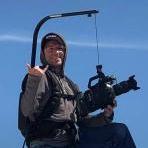
Which one: A7Sii vs SONY X70?
Jeevan Singh Kitare reacted to Geoff CB for a topic
What lenses do you already have? Are you okay sticking with the m43rds ecosystem when Panasonic themselves aren't adding the mount to their high end video cameras? Are you okay with frequent battery switches? Do you need to record external audio directly to camera?1 point -
how to simulate the original "shake" of the old movies shot on film?
Hans Punk reacted to HockeyFan12 for a topic
We're thinking about a lot of the same things! Fwiw I tried the plug ins you mentioned before and found neither worked well, which is why I didn't comment on them before. Imo the Red Giant one really misses the mark, even though they have a lot of other good stuff. But the After Effects wiggle expression and tracking tricks work okay for me. I also do a lot of per-channel regraining (separating channels, overlaying grain on each, recombining them) to get color grain and make sure the blue/yellow noise is more prominent, but it still doesn't quite have the integrated look that film has. Curious what your best results are from for "film look." I also like the vibrance plug in. I agree about miniDV. My friend has the new 120fps iPad and says it makes a huge difference with scrolling. Likewise VR is 90-120fps. I think we're gonna see that being the standard pretty soon, but in VR not in film, or at least mostly in VR.1 point -
There was some interesting research done about 20 years ago regarding CDs that suggested that we possess far more accurate timing circuits - for want of a better expression - when it comes to audio than was ever considered and that we are actually able to perceive the sliced element of digital audio and so our brains then de-prioritise it and let it tick along in the background as a reduced 'threat' that needs less immediate monitoring. Which translates if not to outright boredom then certainly in being less engaged in it than we are with a subtly changing analogue source.1 point
-
I think its going to be difficult for anyone to give you a definitive answer really because there can be such a broad difference between the light in say a dingy pub and an arena concert so the answer is always going to be 'it depends'. What might be useful for you though is to go and look on this flickr group of concert photographs. There are over 200,000 on there from gigs in all different conditions and using all different camera and lens combinations. The majority of pictures have the exif data displayed to show you the ISO/SS and Aperture used so pick a sample set of the sort of level of gigs that you'll be covering and you should be able to get a feel for the exposures required. I suspect the support with that lens might give you more challenges than the light if you intend to use it handheld. https://www.flickr.com/groups/concertshots/pool/1 point
-

Pro camcorders? They're pointless creatively.
iamoui reacted to Andrew Reid for a topic
What a good analogy, I always enjoy the parallels between music and filmmaking / video. They nearly always hold up. I have rarely seen a higher-end shoot that didn't have a lot of complexity and setup, unnecessary in some cases. Overkill is common too, in pro video industry... guys doing interviews with an EPIC. What's all that about? Are they doing lip sync at 240fps? Haha. This is exactly how I feel about my C500... It has sat on the shelf, mainly due to needing the beastly external recorder to get a decent picture out of it. Workflow for my GH5 - Hold it, press 1 button. The end. Workflow for my C500 - Plug in SDI cable, make sure battery is charged for external monitor, turn on camera, turn on screen, wait quite a bit, oh you forgot the audio, silly me, grab an XLR mic, attach a module, attach the mic, check the levels, plugin headphones, dive into the menus a bit... And now my arm hurts, because it's all rather heavy. And what's that icon, oh dear my 256GB SSD just filled up in 5 minutes with 4K RAW at 120fps. Stop shooting, down tools, put the SSD into laptop, wait 30 mins for it to offload, wipe, reformat in the Odyssey, re-initialise, repeat every so often. And with the FS5, the sheer amount of buttons really pissed me off as did the fact that when I took it on a shoot in public, people stared. Some of them robbers. Indeed, the end result is so close, between even a RED and a £400 consumer camera these days, that just like in the audio world, the diminishing returns up-high just aren't often worth the hassle.1 point -
Panasonic GH5 - all is revealed!
jonpais reacted to Fritz Pierre for a topic
@buggz...personally I would always opt for the widest FOV and the fastest adapter: the XL...others may not feel this way, but disregarding vignetting on some lenses, is an extra 1/3 of a stop worth it to you?....could well be the difference between getting a shot or not...for me, that alone is worth doing a bit of cropping in post, in the case of vignetting on some lenses...as everyone does some post now anyway, why not simply crop in post on this more versatile and faster adapter...for my needs that seems the prudent choice.1 point -
Enabling 10bit raw video on the mini Canon 100D
samuel.cabral reacted to mercer for a topic
Read the article, Reid has screengrabs from clips he took with it.1 point -

Which one: A7Sii vs SONY X70?
deezid reacted to Andrew Reid for a topic
Get a GH5 if rolling shutter is a concern. Or shoot in full frame 4K mode on the A7R II which does pixel binning rather than a full sensor readout in that mode, so less rolling shutter. X70 has a completely different aesthetic to the A7S II... Does that not matter to you?!1 point -

Enabling 10bit raw video on the mini Canon 100D
tupp reacted to Andrew Reid for a topic
MLVFS needs FUSE on MacOS, and it does work on Linux but I'd question why you'd even bother with it on Android as the mobile processors don't exactly cut through RAW video in Resolve, do they....1 point -

Which one: A7Sii vs SONY X70?
Jeevan Singh Kitare reacted to Justin Bacle for a topic
I don't think rolling shutter would be noticeable as there is not much movement usually in weddings video. However I think you would be better with a video camera (like the new AE1, the JVS LS-300 or something similar with ND filters, Viewfinder and proper XLR Audio) than with a DSLR if money is not a huge problem. Just my own thoughts, depends on your priorities (Image Quality, Low light, Ease of use, Audio, ND filters, battery life and so on)1 point -
Canon 6D Mark II lacks 4K video - What were they thinking?!
Eno reacted to Fredrik Lyhne for a topic
I was under the impression that they use different codecs and you didn't have to transcode the Panasonic files? Could be wrong though... Anyways, I don't think anyone uploading to youtube want or need 400mbs, so it's great that Panasonic offers a lower bit rate as well and they should be applauded for offering both.1 point -
Canon 6D Mark II lacks 4K video - What were they thinking?!
Geoff CB reacted to Mattias Burling for a topic
(IMO) I cant believe we are still having this discussion. Canon is the number one best selling camera company. They haven't forgotten to put in 4K. Nor made a non thinking decision. Or because of conservatism. Or any of the other hundreds of reasons we will see on forums across the world. They have made the decision based on MONEY! They have spent lots of time, research, endless meetings, focus groups, analyzed data, you know... all that stuff that people in forums have absolutely not done. And based on their findings they have made a decision. So far they have been right every single time. No matter what Panasony puts in their cameras Canon is still outselling them. And if that wasn't enough. This is the 6D... its always been their sub 5D model... And its an awesome stills camera. Aimed at the people out there who actually buys cameras.. stills shooters. Now if they would have put 4K video and IBIS in their 6D. Driven the cost to the same level or at least to close to the 5D. And scared of the biggest bulk of the camera buying target group, who actually quite often gets mad about having to pay for video features... Well that would have been truly stupid. But whats most supricing of all. This happens every single time. They are not now nor ever going to release a stills camera that will wow the video crowd. So just let it go. Its the same thing when all the whining about Blackmagic delays are rolling the interent. Even though its how they do it every single time.1 point -

Sony Cameras - Analysis Paralysis
Kubrickian reacted to noone for a topic
How about one of those USB drink coolers? The flat ones you put a can or cup on? They only cost a couple of bucks. If I had any over heating issues with my A7s that is what I would try. I will get one shortly anyway to play with but when I had my Pentax DSLR that overheated at any time it would have been worth trying at least.1 point -
Sony Cameras - Analysis Paralysis
Kubrickian reacted to mercer for a topic
I had the Mark V and the a6500. And let me tell you, I loved and hated both of those cameras. The RX100 V is so damn cool for a pocket camera but I got an overheat warning, then shut down 30 seconds into shooting slow motion in the middle of winter. I had the screen away from the body and every little trick I found online about precautions. I got the warning while setting up the menu without ever shooting a second of video. So it's basically useless. But I liked the sLog and Cine2 image so much I decided the a6500 and its bigger body would at least make it usable... it is " better" and man that is some of the nicest looking 4K I have ever used. sLog3 almost reminded me of Raw video with its detail. I live in the middle of the woods, so the way cameras pick up the details on tree bark and leaves is very important to me and sLog3 looked damn close to Raw. And sgamut 3 cinema or whatever it's called is beautiful. The camera is well built and the 5-axis was a joy to use with my vintage Minolta lenses. But again... in 35 degree Fahrenheit weather, I got the overheating warning. It never shut off, but that was just too much for me for a $1300 camera. So I returned it. Here's a small test video I did with it and sLog3 and cine gamut3. I can only imagine what you pros could do with it, if the overheating can be worked around... When the camera gets down to the $800 range or less, I may pick up another one. And here's a screengrab with lowlight in SLog2...1 point -
It indeed looks like either part of an optical printer or reconfigured to or from print duplication use. Seen this lens being re-sold 2 or 3 times from different sellers without much time between auctions - which raises alarm bells as to its real practicality for filmmaking use (and where is footage of it at infinity and variable stops?). No doubt the optics are going to be top notch but I'd want to be assured that its focus can hit infinity with that aperture inside (causing added space between optics), since I would presume that lens was always intended for closeup duplication use, as part of a specific optical printer or telecine machine. I suspect that the variable aperture inside the lens is not going to make the image much sharper when coupled with a taking lens, but rather cut the light transmission to the taking lens and dramatically increase vignette. In a nutshell, if it was the wonder lens that it is supposed to be, where is example footage of it resolving infinity focus and its results when stopping down with its internal aperture? EDIT: Found an expired eBay auction that sold for $250 that confirms my hunch... "This is is multiple lens assembly that was used at Deluxe Film Laboratories in Hollywood for 35mm anamorphic conversion to flat formats for theatrical trailers. It should not be confused with camera or projector lenses. Printing lenses are ulta sharp intermediate lenses designed to resolve 35mm camera original high resolution color negative without distortion. The assembly consists consists of three separate lenses, each of which may be separated for individual use: Isco Lens VII - Base Lens Isco Anamophis Printing Lense 2x with Manual IRIS Ring (Like F-Stop) Isco Lens III - Output Lens I highly doubt the Isco printing lens can hit infinity without stopping it down to a crazy small aperture. You can see from the original configuration that it is basically used for near-macro focus distances, as part of an optical conversion chain. If it could indeed be used for filmmaking use, I would be interested to hear how on earth you would achieve infinity focus. I think the current seller on eBay is a member of this forum @Hunterj11 perhaps they can shine some light on this lens?1 point
-
Lens sharpness is different than electronic processing sharpness- which is what the GH's have always gone overboard with at default settings. They also do additional processing when you use native (electronic) m4/3 lenses, to correct each lenses' shortcomings (edge softness, CA, etc). Just turn the sharpness setting down and use your NLE to sharpen to taste, and/or use non-native (not Panny or Olympus) lenses.1 point



